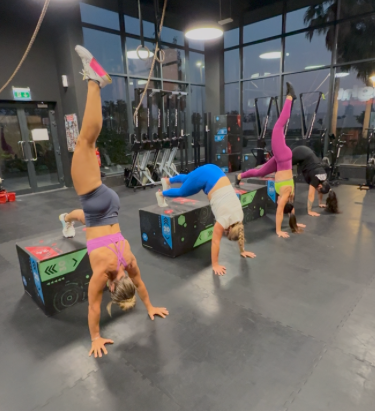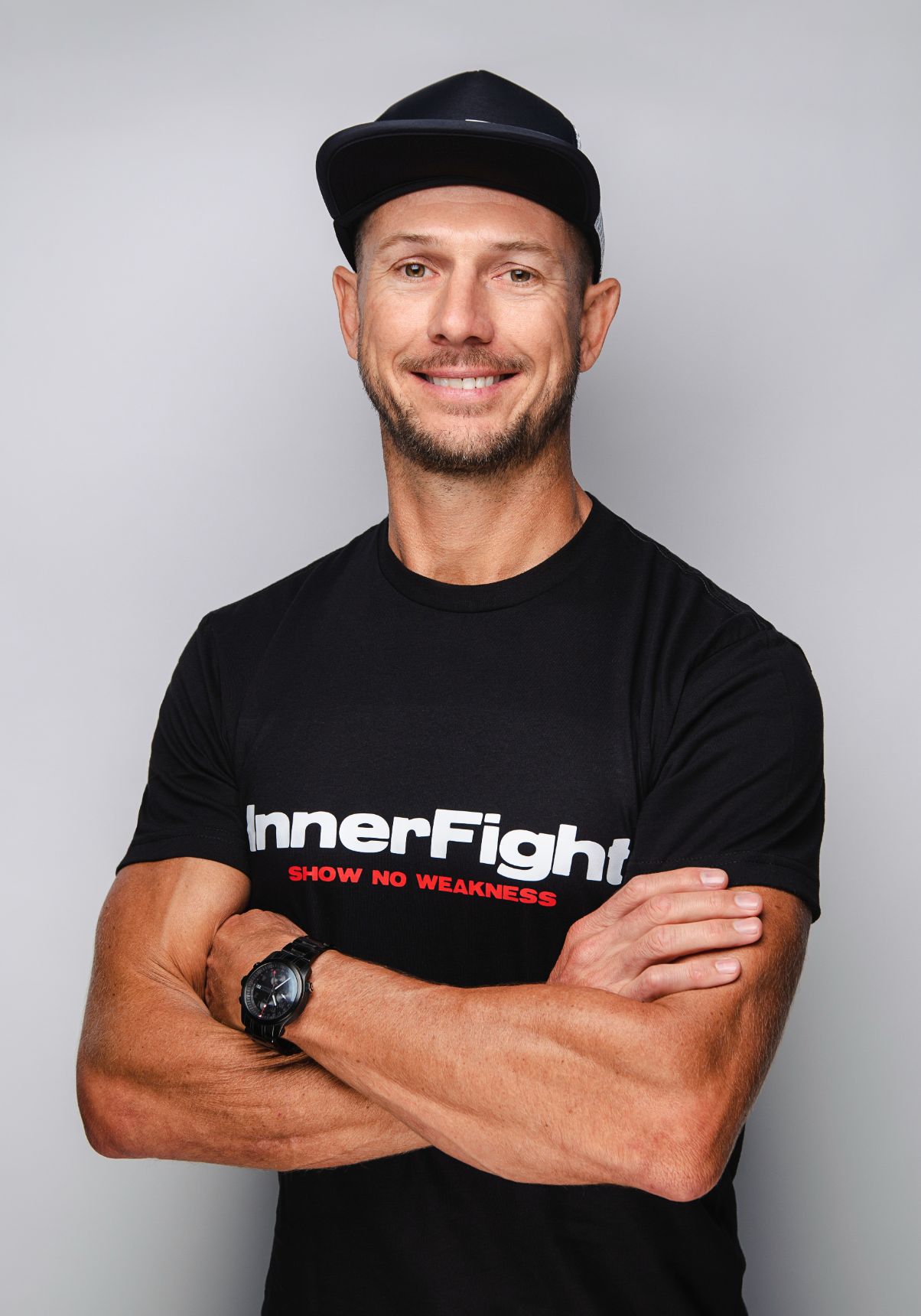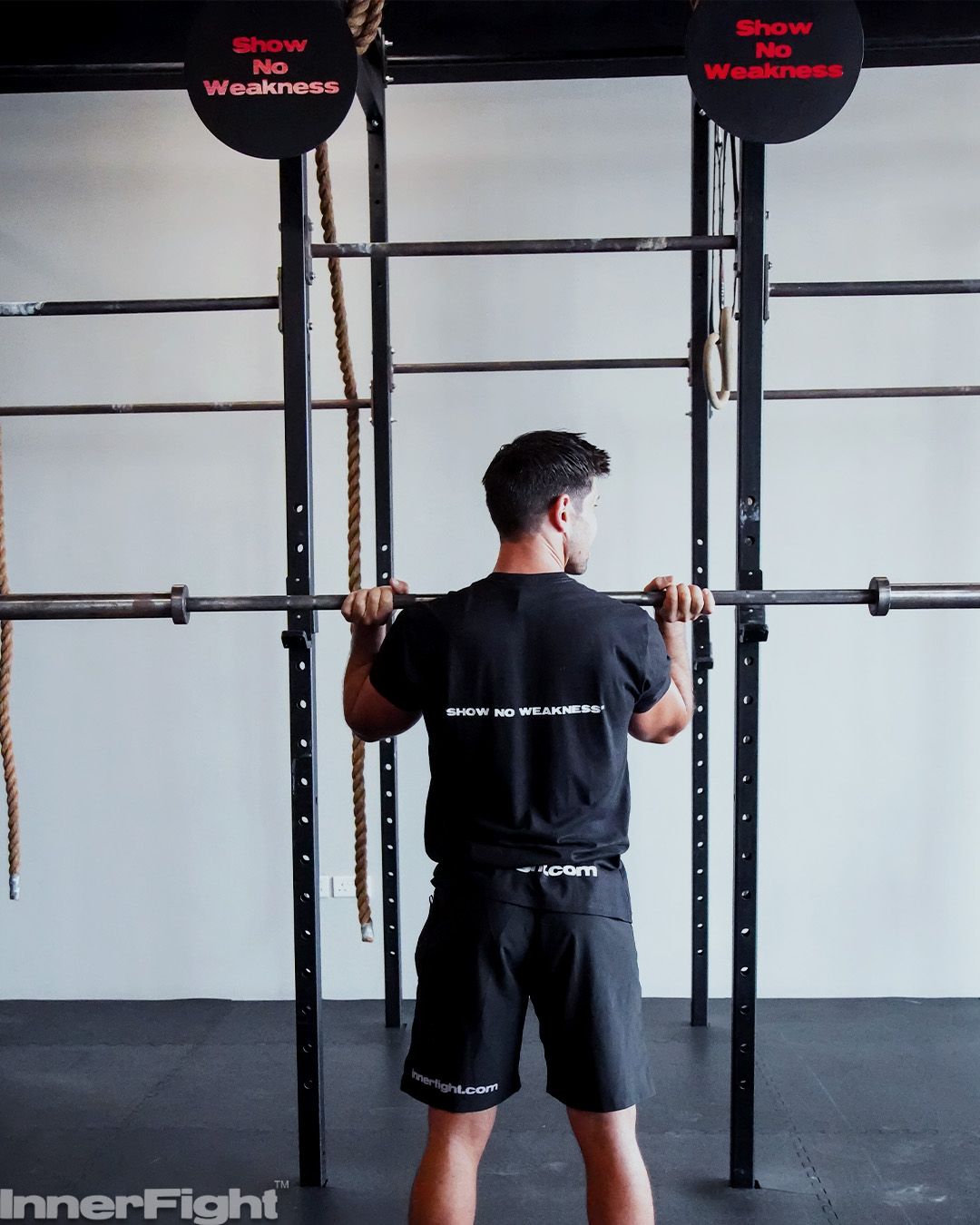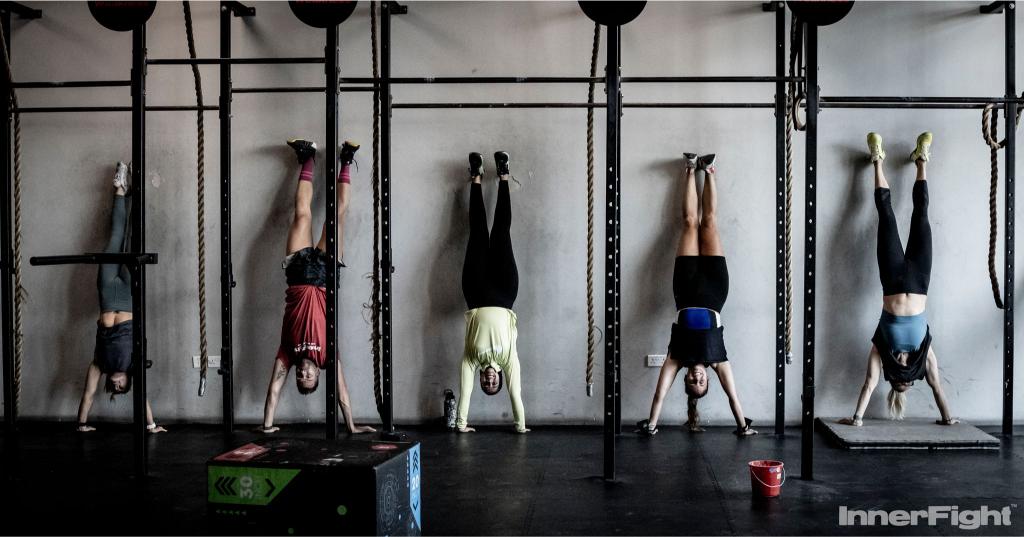The Secret to CrossFit Gymnastics

Why Strict Strength Wins Every Time: The Foundations of Gymnastics Mastery
When performed correctly, gymnastics is poetry in motion. It truly has everything: full body strength, resilience, and elegance. You can’t just muscle through. Instead, there must be an understanding of how to utilise every part of your body to become one coherent unit.
I still remember my early days of CrossFit. Watching members and coaches perform muscle-ups, butterfly pull-ups, handstand push-ups, and walking on their hands. I was in awe. And, after a few years of grafting, I’ll never forget the exact moment when I performed my first handstand push-up, ring, and bar muscle up. These kinds of milestones, which once I never thought possible, suddenly felt like rites of passage that I was extremely proud to have achieved.
But here’s the thing: each one of these epic movements must be earned.
If you’re reading this and still struggling, whether it be with strict or dynamic movements, I promise that there’s hope for you. You just need patience, determination and the willingness to do the work.
Practice makes permanent.
For every successful rep we celebrate, there are hundreds of “failed” attempts behind it. That’s part of the journey. Moreover, if those “failed” reps are done correctly instead of built on cutting corners, your body will thank you later.
If you haven't built a foundation of strict strength, chances are you’ll create poor movement habits that can be difficult to fix later.
Your body always keeps a score. Kipping before you can do strict pull-ups, bending when you should be extending, flailing instead of creating full body tension, muscling through where you should be moving efficiently, you might still be able to achieve a rep, but in the end, these ways of moving will stall your progress and increase your risk of injury.
Here’s why strict before kipping matters: Stability equals longevity.
- Joint Health: Your joints take a beating if you don’t have a solid base. Connective tissues in areas such as your shoulders and elbows are asked to absorb forces they’re not prepared for. Strict movements strengthen the small stabiliser muscles around the joints, protecting them from injury during more aggressive, and dynamic movements.
- Movement Quality: You’ll have better body control and smoother technique through the entire range of motion when performing kipping variations.
- Sustainable Progression: Think safe and consistent progression, avoiding plateaus or injury setbacks.
Strict First Dynamic Later: Why Bands, Abmats and Shortcuts Aren’t the Answer
A significant factor is the actions we take to chase a rep, which can hinder our progress. Using multiple mats to achieve a handstand push-up and constantly grabbing bands to fly through kipping pull-ups will never provide the prerequisite strength to reach your goals.
Moreover, if you can’t hold a perfect hollow hold on the floor for more than 30 seconds, how do you expect to maintain one on the rig while moving through time and space? If you can’t do at least five strict pull-ups, what business do you have to put your shoulders through the sheer forces involved in kipping?
The boring shapes and strict work are not a punishment. They are the prerequisite strength and control you need to move well and safely. It might take more time, practice and patience at the start. But you will improve so much quicker and master the advanced movements with true virtuosity.
Nathan Bird, owner of the CrossFit-accredited Gymnastics Course, defines virtuosity as “performing the common uncommonly well.” This is the heart of gymnastics training.
As a gymnastics coach, I want members to have fun and understand, for instance, what a kipping handstand push-up might feel like. But I have become more confident in backing up how and when I choose to teach them. I want you to do the real work needed to get you to your goals. I want you to succeed, maybe even more than you do. If my athletes don’t have the prerequisite strength, kipping work is saved for “play time” at the end of the session.
The Gold Standard: Virtuosity
Behind every smooth kipping or butterfly pull-up, muscle up, or handstand push-up is a foundation of strength, joint integrity, and core stability.
Think about kipping pull-ups. They look effortless when done correctly. Why? It’s down to science. For every action there is an opposite and equal reaction. These “virtuous” shapes allow us to move correctly and efficiently through time and space. If we don’t work towards this gold standard our movement patterns will break down. Full body tension and strength are the recipe towards success. Whereas bent knees, flared ribs, and soft elbows; every leak in tension redirects force somewhere else. That means wasted energy, half-ass reps, or no reps at all. Science and the laws of physics can’t be argued against.

The “Boring” Work is the Most Rewarding.
We must do the work to allow for neurological and strength adaptations: muscles, tendons, and joints remodel over time to handle load and impact, but only if given the chance.
Cue the stuff nobody wants to do:
1. Build an Isometric Base: Isometric contractions occur when muscles hold tension without movement. This is where we develop positional strength, endurance, and joint stability.
Think chin-over-bar holds, gymnastic plank holds, handstand or push-up holds, ring dip supports, and those spicy L- and V-sits.
- Rock-Solid Stability: These holds fire up the stabilisers, keeping your joints safe and ready for when the movements get explosive.
- Feel the Right Positions: Spending time in stillness teaches your body what “good” actually feels like, so when you move, you move better.
- Last Longer, Perform Better: The stronger your isometric base, the longer you can hold solid shapes under fatigue.
2. Practice Eccentric Loading. Also known as negatives, this is when the muscle lengthens slowly.
"Control the descent, own the position, earn the movement."
Think negative pull-ups, negative handstand, pike or regular push-ups and negative ring dips.
- Strengthen Vulnerable Positions: Breakdowns in the kip often show up during transitions or at the bottom of a rep. Controlled eccentric work helps us maintain strength and stability in those tricky phases.
- Enhance Body Awareness: Slowing movements down increases time under tension, providing a clearer sense of proper positioning and alignment.
- Develop Durability: Consistent eccentric training strengthens tendons and connective tissues, lowers injury risk, and supports long-term performance. That’s where performance really takes off.
3. Continue the Concentric Work, too. This means working through the full range of each movement (lengthening and shortening).
Think full range pull-ups, handstand, pike or normal push-ups, and ring dips.
- Explosive Strength: Concentric training builds the power you need to clear the bar, press through the rings, and transition with control.
- Carryover to Skills: The stronger your concentric pull or press, the smoother your kips, muscle-ups, and handstand push-ups become.
- Overcome Sticking Points: Targeted concentric work helps you push past those “can’t quite get there” moments and turn near-reps into solid skills.
A mix of the above three is the answer. If you’re still struggling with strict strength through the full range of motion (concentrics), then isometrics and negatives should be your primary focus.
Your coach can find the perfect starting point for you. And do your core work: hollow rocks, arch holds, strict toes-to-bar progressions, and ball ups. Because core to extremity strength is just as important.
Lastly, mobility is king and queen. If tight hip flexors are blocking your toes-to-bar, or your shoulder range limits your handstand push-ups, you need to do your mobility work. Strength without mobility is like having horsepower without steering.
This may sound overwhelming, but all you need is a clear-cut plan of attack and we’re here to help.
Putting It Into Practice
Where to begin?
- Join mainline and gymnastics classes. Listen to us coaches, ask for additional resources, don’t just show up to a class with pull-ups once a week, and hope to be flying by the end of the month. Let's build your foundation together, by drilling the basics, and having some fun while doing it.
- Prioritise isometric holds, negatives and strict work. Two to three times a week. If you’re really committed and want to progress more quickly, it’s time to get some programming designed exactly for you.
- Do your homework. Hollow holds, arch holds, and mobility work, twenty minutes a couple of times a week, goes a long way.
Final Thoughts
Gymnastics in CrossFit isn’t just about getting your chin over the bar or your toes to the rig. It’s about how you get there.
You don’t “unlock” a skill and move on forever; you refine it, you improve it, and you respect it. And if you take your time, the process becomes as rewarding as the end goal.
The boring stuff is where the real magic begins to unfold.
Pursue virtuosity and watch what happens. I dare you.
About InnerFight
InnerFight is a premier fitness and endurance coaching company based in Dubai. Whether you’re a busy professional seeking peak performance or an athlete pursuing ambitious dreams, InnerFight offers a supportive community where hard work, honesty, and simplicity drive extraordinary results.
We share insights, advice, tips and success stories to empower your fitness journey:
- The InnerFight Podcast features fitness, mindset, and personal stories
- The Endurance Podcast covers running, cycling, and triathlon training
- The InnerFight Blog delivers expert articles from certified coaches
Follow us on LinkedIn, Instagram, Facebook, and X for weekly motivation, training tips, and behind-the-scenes content from our Dubai community and international training camps.
If you’re based in Dubai, visit our 5,000 square foot facility to experience our world-class strength and conditioning classes, personal training, and endurance coaching. Receive 3 free sessions to experience our approach firsthand.
FUN - Honesty - Simplicity - Smash Life - Mental Toughness - Hard Work



.avif)


.jpg)
.jpg)
.avif)

.jpg)

